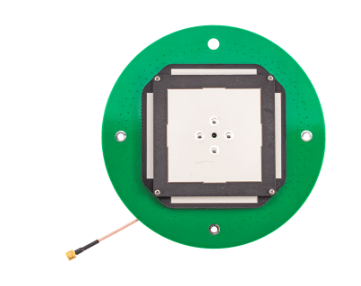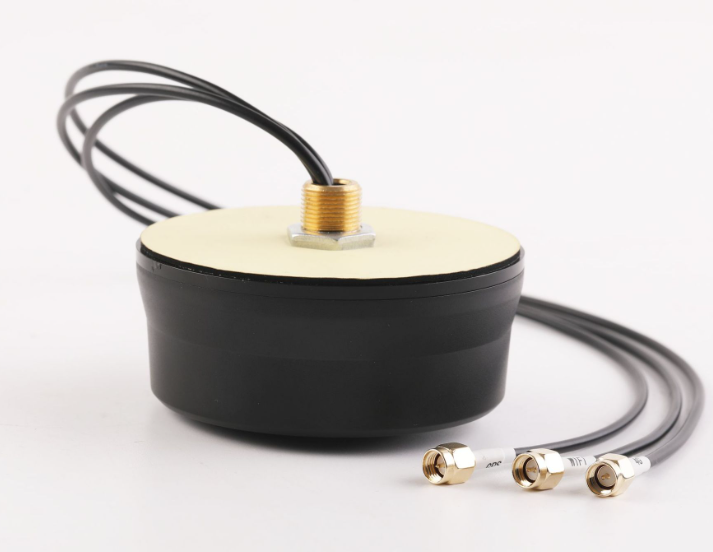Gps antenna size
With the wide application of Global Positioning system (GPS) technology, GPS antennas play an important role in various fields. The size of GPS antennas has a direct impact on positioning accuracy. This paper discusses the influence of GPS antenna size on positioning accuracy, and introduces the size characteristics of GPS antennas in different types and application fields.

Overview of GPS Antenna
GPS antenna is a device for receiving GPS satellite signals. Its main function is to convert the received weak signals into electrical signals that can be processed. The performance of GPS antennas is affected by many factors, among which the size of the antenna is a key factor.
Influence of GPS Antenna size on Positioning accuracy
1. Received signal strength: the size of the GPS antenna directly affects the received signal strength, and the larger antenna can receive a stronger signal, thus improving the positioning accuracy.
2. Anti-jamming ability: large GPS antenna has better anti-jamming ability and can receive and analyze signals more accurately in complex environment.
3. Sensitivity: sensitivity is the ability of the GPS antenna to receive weak signals. Under the same conditions, the sensitivity of the larger antenna is higher, which is helpful to improve the positioning accuracy.
Size characteristics of different types of GPS antennas
1. Handheld GPS antennas: these antennas are usually small and easy to carry. Although they are small, they are optimized for handheld devices to ensure positioning accuracy in handheld use.
2. Vehicle GPS antennas: vehicle GPS antennas are usually larger to receive more stable signals during driving, and they are usually installed on the top of the vehicle to get the best signal reception effect.
3. Aerospace GPS antennas: in the aerospace field, the accuracy of GPS antennas is very high. These antennas are usually large and have high performance receiving ability to ensure positioning accuracy in extreme environments.
4. Nautical GPS antennas: nautical GPS antennas need to have the characteristics of waterproof and corrosion resistance, at the same time, to ensure the positioning accuracy in the marine environment, their size is large, in order to cope with signal attenuation and interference in the marine environment.
GPS Antenna size in Application Field
1. Navigation system: in navigation system applications, GPS antennas are of moderate size to ensure stable positioning services during driving. These antennas are usually integrated in the vehicle system to provide accurate navigation information.
2. Drones and drones: drones and drones need high-precision positioning services. They are usually equipped with larger GPS antennas to ensure stable positioning during flight or navigation. These antennas usually have high sensitivity and anti-jamming ability to cope with complex environmental conditions.
3. Smartphones and tablets: with the popularity of smartphones, built-in GPS antennas have become a standard feature. these built-in antennas are smaller but optimized to meet daily positioning needs, and other mobile devices such as tablets have adopted similar GPS antenna designs.
4. Scientific research and measurement equipment: scientific research and measurement equipment require extremely high positioning accuracy. These equipment are usually equipped with large GPS antennas with high performance to ensure high precision positioning in extreme environments. These antennas have excellent receiving ability and anti-interference performance to meet the needs of scientific research and measurement.
The size of GPS antenna is one of the key factors affecting positioning accuracy. GPS antennas of different types and application fields have different size characteristics to meet their specific positioning needs. When selecting GPS antennas, they need to be comprehensively considered according to the actual application scenarios and requirements. In the future, with the continuous development of technology, we look forward to the emergence of smaller and more efficient GPS antennas to provide more accurate positioning services for various fields.
References:
(added according to references obtained during actual research or writing)
Prospects for the future
With the continuous progress and popularization of global positioning system technology, GPS antennas will be used more and more widely. We can look forward to the progress in the following aspects:
1. Higher-precision GPS antennas: with the continuous development of technology, higher-precision GPS antennas may appear in the future to meet the needs of scientific research, measurement and other fields for extremely high positioning accuracy. These antennas will have better receiving ability and anti-jamming performance.
2. Smaller GPS antennas: with the continuous progress of integration technology, smaller GPS antennas may appear in the future to meet the needs of handheld devices, smartphones and other application fields. These small antennas will have higher sensitivity and performance.
3. Multi-function integrated GPS antenna: the future GPS antenna may have more functions, such as integrating other sensors (such as compass, accelerometer, etc.) to achieve more comprehensive positioning and navigation functions, which will further improve the performance and convenience of the GPS antenna.
4. Smarter GPS antenna technology: with the development of artificial intelligence technology, future GPS antennas may have more intelligent functions, such as automatic calibration, intelligent signal processing, etc., which will help to improve positioning accuracy and user experience. GPS antenna technology will play a more important role in various fields in the future. With the continuous progress of technology and the emergence of innovative applications, we will usher in more advanced and efficient GPS antennas to bring more convenience and benefits to people's life and work.





